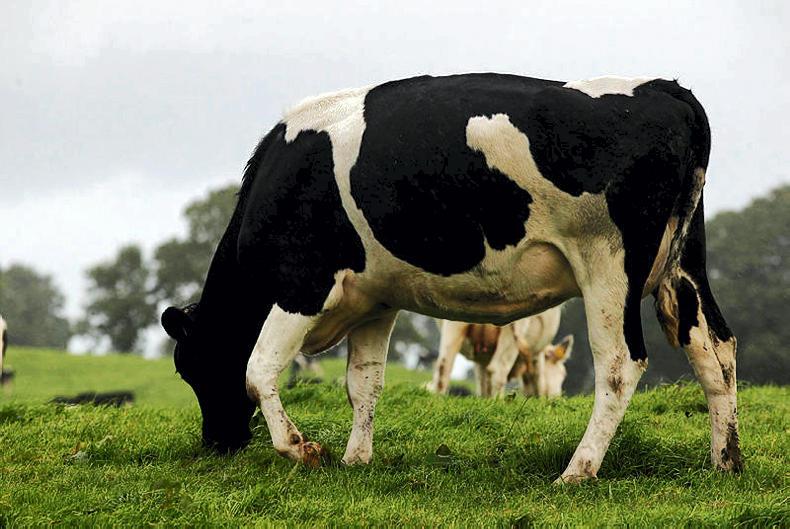In severe cases, this distension of the reticulo rumen can lead to the compression of the lungs, which in effect stops the animal from breathing. It is predominately a condition of cattle, but can affect sheep on occasion. Cattle grazing certain pastures can be more prone to bloat.
Cause
There are two main types of bloat, called primary and secondary bloat. In primary bloat, also known as frothy bloat, the gases coalese within the digesta in the rumen to form a froth, which cannot be eructated (belched) properly. It is associated with certain types of clover and legumes in particular and lush pastures. Frothy bloat can also be seen in beef cattle in feedlots occasionally as well. It is thought to be related to fine particle size and usually occurs when animals have been on a grain diet for one to two months.
It is also thought that rumen microflora may change as the carbohydrate in the diet increases and that these microflora produce metabolites which facilitate the development of frothy bloat.
In secondary bloat, or free gas bloat, there is an accumulation of free gas in the reticulo rumen. This can occur for a variety of reason including the presence of a foreign body such as a potato in the oesophagus, the presence of a tumour impinging on the oesophagus, lesions caused by Actinomyces bovis (the agent which causes timber tongue) impinging on the oesophagus. Vagal indigestion, where the nerve supply to the stomachs is dysfunctional, may also lead to bloat. Conditions which cause paralysis of the musculature of the stomach may also lead to bloat, such as grain overload and milk fever. Chronic ruminal distension is regularly seen among calves up to six months. Although the cause is not known conclusively, it is often associated with a previous dietary upset.
Finally, anything which traps an animal in lateral or dorsal recumbency can predispose to bloat. For example, a sheep which becomes cast on its back, is likely to die of bloat, if it is not righted. Bloat can be complication of milk fever in adult dairy cows.
Symptoms
One of the most common presentations of bloat is sudden death, especially among animals not observed closely. If cattle are placed on pasture associated with bloat, the second and third day on the pastures are considered the days of greatest risk for bloat to occur, although on some occasions it can occur from the first day they are on the pasture. The most obvious place the rumenal distension is visible is upper abdomen, just behind the rib cage. The distension of the rumen, leads to compression of the lungs, which leads to respiratory distress and grunting.
Treatment
In acute life-threatening cases where there is free gas, the gas needs to be released as a matter of urgency. This can be done using a trochar and cannula or by way of a rumenotomy. In the case of a frothy bloat, antifoaming agents are required to separate the gas from the digesta. Once the gas has been separated, the animal can belch off the free gas.
Prevention and control
In the case of pasture or frothy bloat, pasture management plays an important role. Strategies including feeding hay while strip grazing can also be used to control the disease. Rapidly growing pastures pose the greatest risk.
Bloat at pasture is a particular issue in New Zealand, and it can only be addressed by giving antifoaming feed supplements at pasture during periods of greatest risk. Bloat related to grain intake in feedlots requires increased fibre levels in the diet, to increase salivation. This can be added through feeding hay, straw and avoiding finely ground concentrates in the diet.
Secondary bloat is more sporadic and there is no real preventative approach.






 This is a subscriber-only article
This is a subscriber-only article









SHARING OPTIONS: